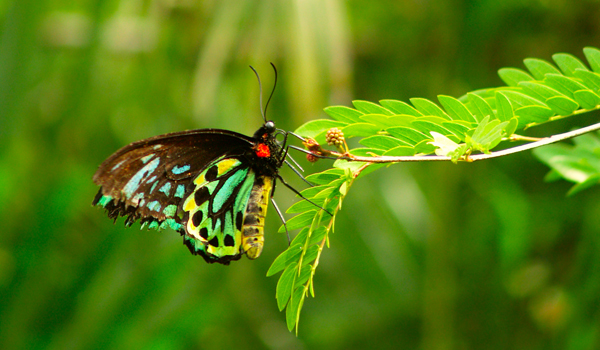
Say the word "butterfly" and a brilliant, orange-and-black-winged Monarch butterfly may fly through your mind. Say "moth," meanwhile, and the brain may conjure up an image of a dull, brown-winged pest that nibbles holes through clothing.
But is appearance really the main difference between these two types of winged insects? What exactly is the difference between moths and butterflies?
It turns out the difference is more than wing deep.
Moths and butterflies both belong to the order Lepidoptera, but there are numerous physical and behavioral differences between the two insect types.
Related: How do mosquitoes sniff out humans to bite?
First of all, moths are much more diverse than butterflies. There are about 160,000 species of moths, according to the Smithsonian Institution, versus about 11,000 of butterflies.
Both types of insects have scales on their wings. But moths tend to have drab, brown or beige wings, while butterflies are typically more brilliantly decorated, Smithsonian Institution notes.
Sign up for the Live Science daily newsletter now
Get the world’s most fascinating discoveries delivered straight to your inbox.
This coloration difference may in part be due to behavioral differences between the two types of insects. Moths are nocturnal and try to camouflage themselves during the day on dark objects like bark and leaves.
Butterflies also camouflage themselves in this way, but they are diurnal, meaning they spend the daylight hours flitting from flower to flower sipping nectar. Their brightly colored wings are often an attempt to tell predators that they contain nasty-tasting chemicals, according to Reiman Gardens at Iowa State University.
Another behavioral difference between the two is that butterflies usually fold their wings back to rest, while moths flatten their wings against their bodies, BBC's Science Focus reported.
Their pupal stage (between the larva and adult stages) is slightly different, too. Moths make cocoons wrapped in silk. Butterflies, on the other hand, form chrysalises, which are hard, smooth and silkless, according to the Lewis Ginter Botanical Garden in Henrico, Virginia.
Other physical differences abound. Butterfly antennae are thin with club-shaped tips, compared with the feathery or comb-like antennae of moths.
In addition to the difference in wing coloration, with butterflies sporting more vibrant colors, moth wings, unlike butterfly wings, have a structure called a frenulum, which joins the forewing to the hind wing.
Though these various traits usually distinguish a butterfly from a moth, there are numerous exceptions to these rules. The comet moth or Madagascan moon moth (Argema mittrei) sports brilliant yellow wings dotted with bright red spots and is active during the day, according to the National History Museum in London. And the endangered Schaus swallowtail (Heraclides aristodemus ponceanus), which lives in Florida's swamps, has rather boring brown coloration, speckled with some white spots, according to the University of Florida.
Originally published on Live Science.

Tia is the managing editor and was previously a senior writer for Live Science. Her work has appeared in Scientific American, Wired.com and other outlets. She holds a master's degree in bioengineering from the University of Washington, a graduate certificate in science writing from UC Santa Cruz and a bachelor's degree in mechanical engineering from the University of Texas at Austin. Tia was part of a team at the Milwaukee Journal Sentinel that published the Empty Cradles series on preterm births, which won multiple awards, including the 2012 Casey Medal for Meritorious Journalism.










